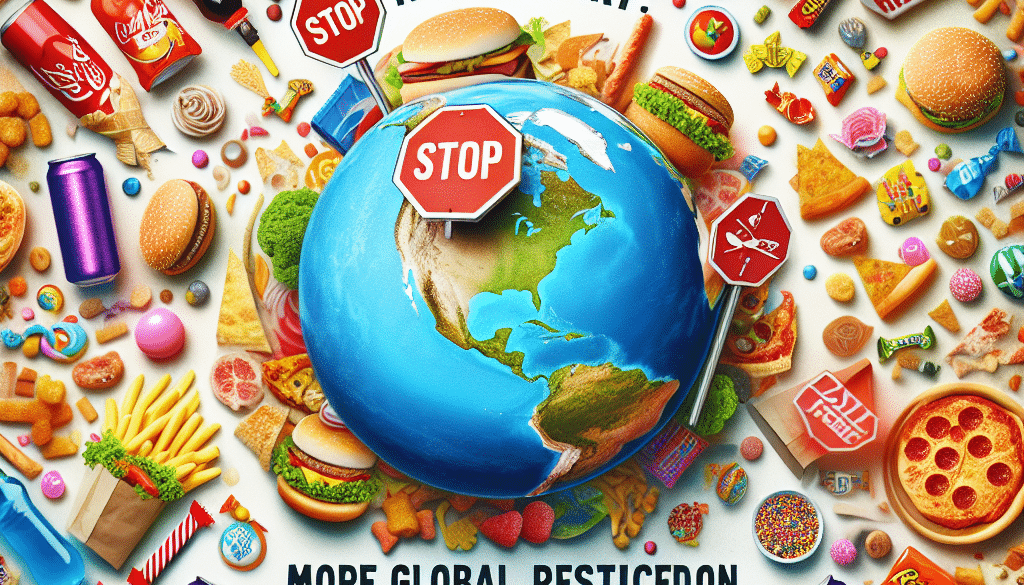Junk Food Marketing to Children – New Report Calls for More Restrictions Globally
-
Table of Contents
- Junk Food Marketing to Children: Urgent Call for Global Restrictions
- The Alarming Influence of Junk Food Marketing
- Case Studies: The Impact of Marketing Restrictions
- Statistics: The Scale of the Problem
- Proposed Solutions and Challenges
- Conclusion: A Call to Action for Healthier Futures
- Choose Health with ETprotein’s Nutritious Alternatives
Junk Food Marketing to Children: Urgent Call for Global Restrictions

In the face of rising childhood obesity rates and the increasing prevalence of non-communicable diseases, a new report has emerged as a clarion call for tighter restrictions on junk food marketing to children. The report, which synthesizes data from multiple studies and public health campaigns, underscores the urgent need for a global overhaul of how junk food is advertised to young audiences. This article delves into the findings of the report, examines the current landscape of junk food marketing, and explores the potential impact of proposed restrictions.
The Alarming Influence of Junk Food Marketing
Marketing strategies employed by junk food companies have long been scrutinized for their role in shaping children’s eating habits. The new report highlights several concerning trends:
- Children are exposed to a high volume of junk food advertising through various media channels, including television, social media, and gaming platforms.
- Marketing tactics often use cartoon characters, celebrities, and interactive games to appeal directly to children, creating positive associations with unhealthy food products.
- Studies have shown a direct correlation between exposure to junk food advertising and increased consumption of high-calorie, low-nutrient foods among children.
The report calls for comprehensive restrictions on such marketing practices to mitigate their harmful effects on children’s health.
Case Studies: The Impact of Marketing Restrictions
Several countries have taken steps to limit junk food marketing to children, with varying degrees of success. Here are a few examples:
- Chile: In 2016, Chile implemented stringent marketing restrictions, including a ban on cartoon characters on unhealthy food packaging and advertisements aimed at children under 14. The country also prohibited the sale of these foods in schools.
- United Kingdom: The UK has restrictions on junk food advertising during children’s television programming but is now considering extending these rules to online platforms in response to the changing media landscape.
- Quebec, Canada: Quebec has had a ban on junk food marketing to children since 1980, which has been associated with reduced consumption of fast food and a lower prevalence of obesity among children in the province.
These case studies provide valuable insights into the potential effectiveness of marketing restrictions in improving children’s dietary choices and health outcomes.
Statistics: The Scale of the Problem
The urgency of addressing junk food marketing to children is underscored by the following statistics:
- According to the World Health Organization (WHO), the number of overweight or obese children under the age of five was estimated to be over 41 million globally in 2016.
- Research indicates that children in the United States may see up to 10,000 food advertisements each year, the majority of which are for unhealthy products.
- A study published in the journal “Pediatrics” found that after just 30 seconds of exposure to junk food advertising, children’s food choices shifted towards high-calorie, less nutritious options.
These figures highlight the pervasive nature of junk food marketing and its potential to significantly impact children’s health.
Proposed Solutions and Challenges
The new report calls for a multi-faceted approach to restrict junk food marketing to children, including:
- Implementing clear, enforceable regulations that define what constitutes unhealthy food and marketing to children.
- Extending restrictions to cover all forms of media, including digital platforms where children increasingly spend their time.
- Encouraging food companies to promote healthier options and adopt responsible marketing practices.
However, these proposals face challenges, such as:
- Resistance from the food and advertising industries, which argue that such restrictions could limit free speech and commercial expression.
- The need for international cooperation, as digital media transcends national borders.
- Ensuring that regulations keep pace with the rapidly evolving media and advertising landscapes.
Despite these challenges, the report emphasizes the importance of taking decisive action to protect children’s health.
Conclusion: A Call to Action for Healthier Futures
The new report on junk food marketing to children is a sobering reminder of the powerful influence that advertising can have on young minds and the urgent need for global restrictions. By learning from successful case studies, acknowledging the scale of the problem through statistics, and considering the proposed solutions, policymakers, health advocates, and industry stakeholders can work together to create a healthier food environment for children. The ultimate goal is to reduce the burden of childhood obesity and associated health issues, paving the way for future generations to lead healthier, more fulfilling lives.
Choose Health with ETprotein’s Nutritious Alternatives
In the context of reducing children’s exposure to junk food marketing, it’s crucial to offer healthier alternatives that support their growth and development. ETprotein provides a range of high-quality, organic bulk vegan proteins that are perfect for creating nutritious food products aimed at children and adults alike. Their non-GMO, allergen-free proteins, including rice, pea, and various seed proteins, are ideal for fortifying snacks, beverages, and meals with essential nutrients. By choosing ETprotein’s products, manufacturers can contribute to a healthier food landscape and respond positively to the call for more responsible marketing practices.
About ETprotein:
ETprotein, a reputable protein and L-(+)-Ergothioneine (EGT) Chinese factory manufacturer and supplier, is renowned for producing, stocking, exporting, and delivering the highest quality organic bulk vegan proteins and L-(+)-Ergothioneine. They include Organic rice protein, clear rice protein, pea protein, clear pea protein, watermelon seed protein, pumpkin seed protein, sunflower seed protein, mung bean protein, peanut protein, and L-(+)-Ergothioneine EGT Pharmaceutical grade, L-(+)-Ergothioneine EGT food grade, L-(+)-Ergothioneine EGT cosmetic grade, L-(+)-Ergothioneine EGT reference grade and L-(+)-Ergothioneine EGT standard. Their offerings, characterized by a neutral taste, non-GMO, allergen-free attributes, with L-(+)-Ergothioneine purity over 98%, 99%, cater to a diverse range of industries. They serve nutraceutical, pharmaceutical, cosmeceutical, veterinary, as well as food and beverage finished product distributors, traders, and manufacturers across Europe, USA, Canada, Australia, Thailand, Japan, Korea, Brazil, and Chile, among others.
ETprotein specialization includes exporting and delivering tailor-made protein powder and finished nutritional supplements. Their extensive product range covers sectors like Food and Beverage, Sports Nutrition, Weight Management, Dietary Supplements, Health and Wellness Products, and Infant Formula, ensuring comprehensive solutions to meet all your protein needs.
As a trusted company by leading global food and beverage brands and Fortune 500 companies, ETprotein reinforces China’s reputation in the global arena. For more information or to sample their products, please contact them and email sales(at)ETprotein.com today.














